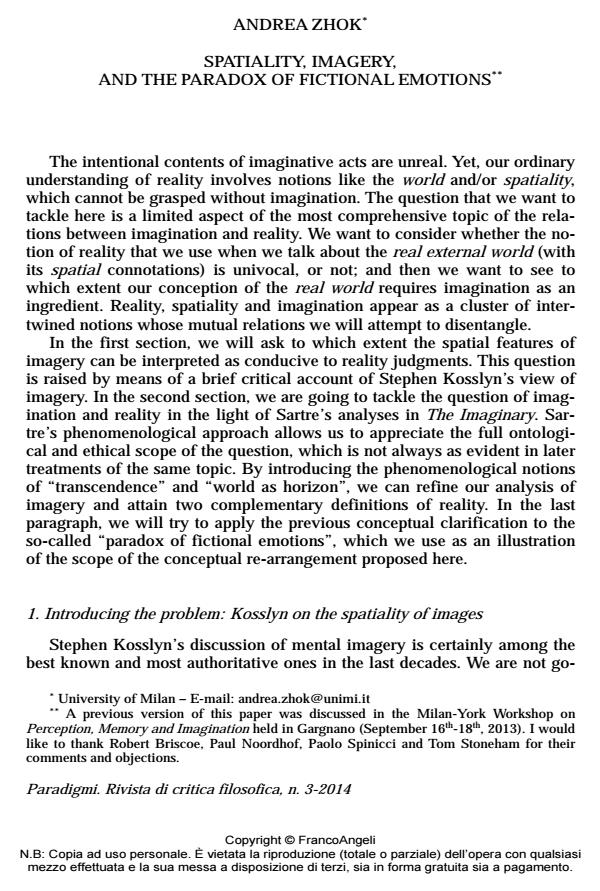Spatiality, imagery, and the paradox of fictional emotions
Journal title PARADIGMI
Author/s Andrea Zhok
Publishing Year 2015 Issue 2014/3
Language English Pages 16 P. 143-158 File size 66 KB
DOI 10.3280/PARA2014-003010
DOI is like a bar code for intellectual property: to have more infomation
click here
Below, you can see the article first page
If you want to buy this article in PDF format, you can do it, following the instructions to buy download credits

FrancoAngeli is member of Publishers International Linking Association, Inc (PILA), a not-for-profit association which run the CrossRef service enabling links to and from online scholarly content.
Oggetto d’analisi è il significato di "realtà" ed il contributo dell’immaginazione alla sua definizione. Nel primo paragrafo, attraverso un’analisi delle tesi di S. Kosslyn, ci si chiede in che misura i caratteri spaziali dell’immaginario possano essere interpretati come essenzialmente afferenti ai giudizi di realtà. Nel secondo paragrafo viene affrontato il tema delle relazioni tra immaginazione e realtà alla luce delle analisi di Sartre ne L’imaginaire. Quest’analisi si conclude con l’elaborazione di due definizioni complementari di realtà. Nell’ultimo paragrafo l’analisi precedente è applicata al cosiddetto "paradosso delle emozioni finzionali", come illustrazione del riassetto concettuale proposto.
Keywords: Phenomenology, imagination, reality, Sartre, spatiality, world.
- On Charles’s “Quasi-Fear”: A Perceptual–Phenomenological Defence of Thought Theory Hicham Jakha, in Journal of the British Society for Phenomenology /2025 pp.213
DOI: 10.1080/00071773.2025.2479442
Andrea Zhok, Spatiality, imagery, and the paradox of fictional emotions in "PARADIGMI" 3/2014, pp 143-158, DOI: 10.3280/PARA2014-003010